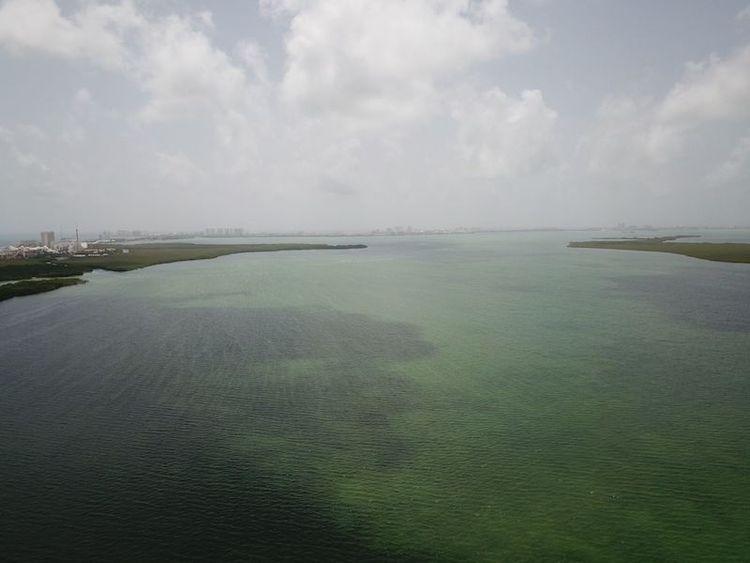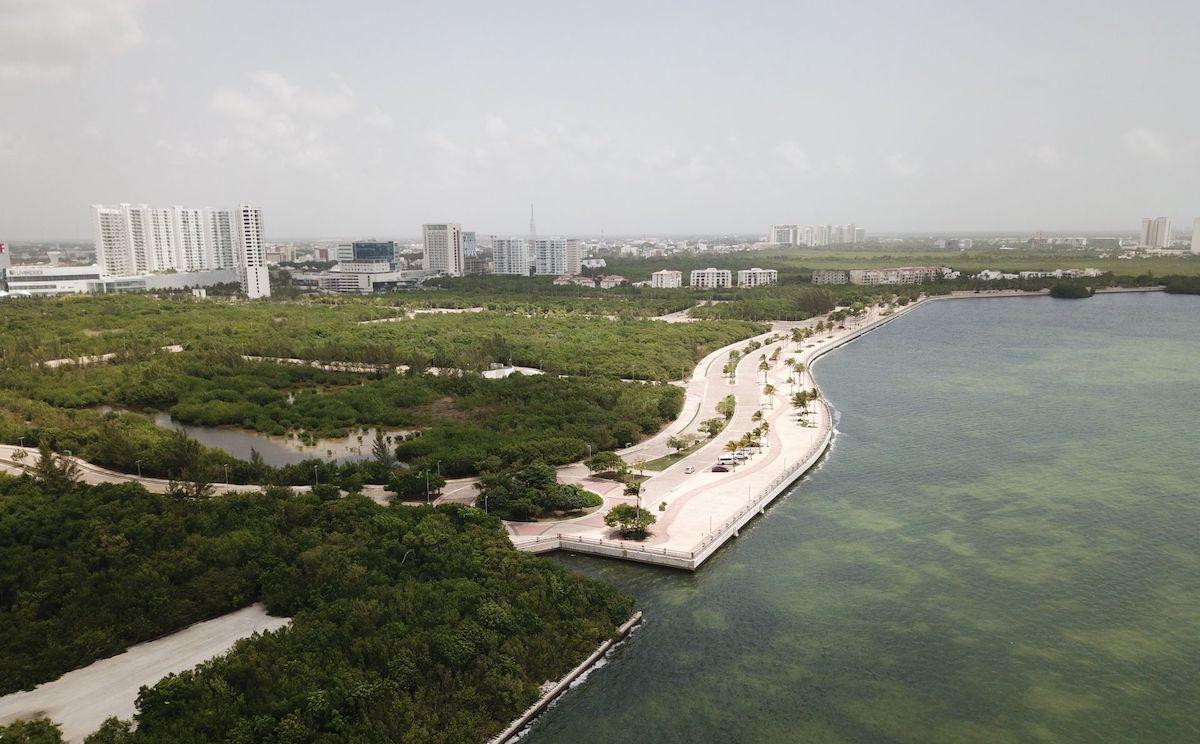The construction of what seeks to be the second longest bridge in Latin America is putting the heart of Cancun, the Nichupté Lagoon, at risk. For five months, street works have been carried out without completing the environmental assessment process, an indispensable requirement.
The project consists of a vehicle bridge that will cross the Nichupté Lagoon to connect downtown Cancun, Quintana Roo, with the hotel zone. It will be 8.8 kilometers long and would be positioned as the second longest in Latin America.
The intention is to improve the mobility and road congestion problems that are increasing with tourism, the authorities explain.
The works are being funded by the federal government, which coordinates with governments at the state and municipal levels. The firm Civil Engineers Associates (ICA) is the one contracted to develop the bridge.
It is estimated that 6,416 million pesos will be invested, according to the Public Account, a document where the expenditures of the Mexican government are recorded.

View of the Nichupté Lagoon in Cancun, Quintana Roo. Photo: Elizabeth Ruíz/Cuartoscuro.com
“This project is not an adequate solution for the road problems we have. That's what they're supposed to be doing it for (the vehicle bridge), but in reality what they should be doing (the authorities) is to make public transport efficient,” said Araceli Dominguez, president of Grupo Gema del Mayab A.C.
In the hotel zone of Cancun there is no longer room for another car, he said.
Since 1983, the Mayab Gema Group has been dedicated to environmental defense through legal channels and disclosure. Like other local organization groups, they have participated in the defense of the Xcacel-Xcacelito sea turtle sanctuary and the Tajamar mangroves, both in Cancun.
“The Nichupté Lagoon is in a deteriorating condition. It is very contaminated because most of the treatment plants are not efficient for their work, but they also do not have the capacity to handle so much volume that has increased in the hotel zone,” Domínguez explained.
However, the works began last July when President Andrés Manuel López Obrador gave the signal during a visit to Quintana Roo.
This is while the Environmental Impact Manifestation (MIA), which is a requirement for works to begin, was paused under the status of “deadline extension” from June to December due to a request made by the Ministry of Environment and Natural Resources (Semarnat) to the developer.
The MIA is a technical-scientific study carried out by the promoter of the project to demonstrate the effects that his work or activity may cause on the environment. This is submitted to Semarnat for evaluation and to determine if it authorizes the project.
Currently, the status of the MIA remains in the pending submission to complete the review. This is available from Semarnat and is classified as a “net positive impact” level project.
At the same time, mitigation measures are proposed such as the reforestation of 2,36 hectares that will be temporarily affected; the rehabilitation of an area of 306.6 hectares of wetlands; and the donation of 305.85 hectares of land in the state of Quintana Roo to Semarnat.
The bet is on hotel and commercial growth in Cancun, which is positioned as the most visited tourist destination with beach in Mexico.
Land section and lagoon of the Nichupté vehicle bridge presented at the MIA. Source: Regional Modality Environmental Impact Manifestation.

View of the Nichupté Lagoon in Cancun, Quintana Roo. Photo: Elizabeth Ruíz/Cuartoscuro.com
On the environmental impacts that may result from the expansion of the 3,500 hectare lagoon system, which has an influx with the Nichupté Mangrove Flora and Fauna Protection Area, which are at risk.
Mangroves are a type of wetland that help with vital processes such as being a buffer zone for floods and storms, while being home to multiple species.
In addition to investing in private vehicle transport, for the Gema del Mayab Group, it is necessary to recover the lagoon, as they fear that the hotel growth seen with the arrival of the bridge will affect the ecosystem more.
“What we proposed in the public consultation that took place, and in some of the inquiries we had directly with the presentation of the state government, is that before making growth (hotel development), what was needed is to clean up the Nichupté lagoon,” said Domínguez.
But on actions against pollution, there are still no studies or concrete measures.




Comentarios (0)